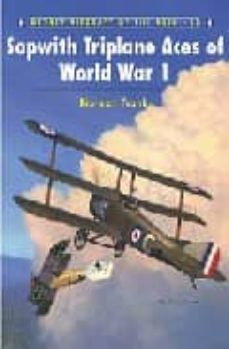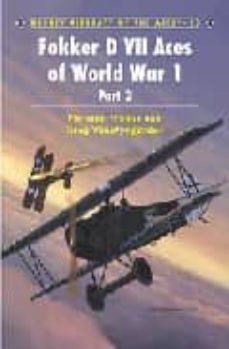Imprescindibles
Más vendidos Libros más leídos eBooks más leídos Todos los libros Todos los libros Autores destacados Series y sagas
Recomendados Libros recomendados Autores destacados Libros que inspiran Vidas con historia LGTBIQ+ English books
Ficción
Literatura Contemporánea Estudios literarios Clásicos Cuentos Poesía Teatro Libros de bolsillo Sagas literarias
Géneros literarios Novela romántica y erótica Novela negra Novela histórica Narrativa fantástica Novela de ciencia ficción Novela de terror Narrativa de humor Narrativa de viajes
No Ficción
Ciencias y tecnología Biología Ciencias Ciencias naturales Divulgación científica Informática Ingeniería Matemáticas Medicina Salud y dietas Formación Idiomas Estilo de vida Libros de Cocina Guías de viaje Narrativa de viajes Deportes Libros de Juegos Manualidades
Humanidades Autoayuda y espiritualidad Ciencias humanas Derecho Economía y Empresa Psicología y Pedagogía Filosofía Sociología Filología Biblioteconomía Estudios filológicos Estudios lingüísticos Estudios literarios Historia y crítica de la Literatura
Infantil
Juvenil
#Jóvenes lectores Narrativa juvenil Clásicos adaptados Libros Wattpad Libros Booktok Libros de influencers Libros de Youtubers Libros Spicy Juveniles Libros LGTBIQ+ Temas sociales Libros ciencia ficción Libros de acción y aventura Cómic y Manga Juvenil Cómic Juvenil Manga Shonen Manga Shojo Autores destacados Jennifer L. Armentrout Eloy Moreno Nerea Llanes Hannah Nicole Maehrer
Libros de fantasía Cozy Fantasy Dark academia Hadas y Fae Romantasy Royal Fantasy Urban Fantasy Vampiros y hombres lobo Otros Misterio y terror Cozy mistery Policiaca Spooky Terror Thriller y suspense Otros
Libros románticos y de amor Dark Romance Clean Romance Cowboy Romance Mafia y amor Romance dramatico Romance dramatico Romcom Sport Romance Otros Clichés Enemies to Lovers Friends to Lovers Hermanastros Slow Burn Fake Dating Triángulo amoroso
Cómic y Manga
Novela gráfica Novela gráfica americana Novela gráfica europea Novela gráfica de otros países Personajes, series y sagas Series y sagas Star Wars Superhéroes Cómics DC Cómics Marvel Cómics otros superhéroes Cómics Valiant
eBooks
Literatura Contemporánea Narrativa fantástica Novela de ciencia ficción Novela de terror Novela histórica Novela negra Novela romántica y erótica Juvenil Más de 13 años Más de 15 años Infantil eBooks infantiles
Humanidades Autoayuda y espiritualidad Ciencias humanas Economía y Empresa Psicología y Pedagogía Filosofía Historia Historia de España Historia Universal Arte Cine Música Historia del arte
Ciencia y tecnología Ciencias naturales Divulgación científica Medicina Salud y dietas Filología Estudios lingüísticos Estudios literarios Historia y crítica de la Literatura Estilo de vida Cocina Guías de viaje Ocio y deportes
NORMAN FRANKS
Recibe novedades de NORMAN FRANKS directamente en tu email
Filtros
Del 1 al 6 de 6
OSPREY PUBLISHING 9781855329607
The Albatros family of fighters were amongst the most effective aircraft employed by the Idlfieg (Imperial German Air Service) for much of World War 1, with the D.III and D.Va being flown by most of the 363 pilots who qualified as aces at some point in their often brief careers. The Albatros was the scourge of the RFC on the Western Front in 1916-17, with pilots of the calibre of von Richthofen, Boelke and Schleich cutting swathes through their opponents. Well over 4000 Albatros scouts were built between 1916 and 1918, and they were also extensively used by the Austro-Hungarians against Russian, Italian and British aircraft until war's end.
Ver más
Tapa blanda
OSPREY PUBLISHING 9781841767284
The inspiration behind the iconic Fokker Dr I, Sopwith's Triplane was built as a replacement for the company's hugely successful, and much loved, Pup. Thanks to its massive wing area, the revolutionary Triplane boasted an unmatched rate of climb and greatly improved manoeuvrability. Indeed, when the type made its combat debut in late 1916, the Triplane could easily out-fight any other aircraft operated by either side. Used exclusively by the Royal Naval Air Service and the French Navy, theTriplane had a far greater impact on the aerial war over the Western Front than its meagre production numbers really deserved. Pilots such as Ray Collishaw, Bob Little and Roderic Dallas all enjoyed success in the bloody struggle for aerial supremacy over the Western Front in 1917. The first volume in print devoted exclusively to Triplane aces, this book includes numerous first-hand accounts, detailed appendices, more than 90 rare photographs and over 40 all-new colour profiles and planforms.
Ver más
Tapa blanda
OSPREY PUBLISHING 9781841767291
Volume 53 in this series covered Fokker D VII aces from the four elite Jagdgeschwadern of the German army, and this follow-on volume charts the story of the many aces who flew the famed fighter in other units committed to combat in the final months of World War 1. D VII operations covered the entire Western Front, from the North Sea to the Swiss border. In the latter half of 1918 the Fokker was not only the mainstay of the army Jagdstaffeln, but also the most potent fighter flown by home defence Kests and the pilots of the German navy in Flanders. The D VII easily proved the equal of the many British, French, Belgian and American aircraft it met in combat, and served in such roles as day bomber interceptor, 'balloon buster' and nightfighter. Though handicapped by a lack of fuel and other supplies as the German war machine fell apart, aces such as Sachsenberg, Degelow and Rumey utilised the D VII to rack up impressive scores against consistently superior odds.
Ver más
Tapa blanda
FRANKS, NORMAN y MUGGLETON, SIMON
The History Press 9780752486499
Following the extraordinary career of a Second World War bomber pilot, Flying Among Heroes brings together adventure and human daring with the harsh realities of being a member of the wartime Royal Air Force. Tom Cooke, like hundreds of other young men in 1939, joined up to the RAF just a few days before war began aged 18, being selected for pilot training. Just five years later, he had flown fifty-one operations, taken part in the Berlin bombings and three 1,000-bomber raids, and had even taken part in special operations in conjunction with the SOE. Not only did Cooke volunteer for an optional second and third tour of operations, but he was also shot down over France on his thirteenth special operation, survived the bale out with his crew and evaded capture. Helped by the French Resistance, he managed to make his way into Spain and was taken back to England from Gibraltar. Unsurprisingly, considering Cookes outstanding bravery and patriotism, he was decorated multiple times in his career. Franks and Muggleton make use of primary documentation, including Cookes own words, and contemporary images to put together a poignant story of wartime duty. In an effort to portray the situation for many young men like Cooke, much information is included on other squadrons and operations, as well as on Bomber Command itself. In all, 55,000 men of Bomber Command gave their lives to the cause of the Second World War; this is the tale of just one of those remarkable young men who survived the hardships of war, returning victorious to a nation of heroes.
Ver más
eBook
Del 1 al 6 de 6
































